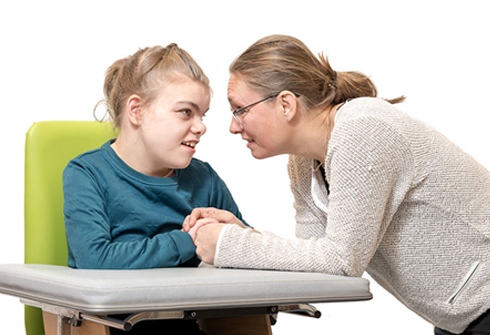
Phobias
September 13, 2020
Kidney Stones
September 13, 2020What is Autism Spectrum Disorder(ASD)?
Autism spectrum disorder (ASD) involves persistent challenges in social interaction, speech and nonverbal communication. There are restricted and repetitive behaviors. The effects of ASD and the severity of symptoms can vary from patient to patient.
ASD is usually first diagnosed in childhood with many of the most-obvious signs presenting around 2-3 years old, but some children with autism develop normally until toddlerhood when they stop acquiring or lose previously gained skills. According to the CDC, one in 59 children is estimated to have autism.
Autism spectrum disorder is also three to four times more common in boys than in girls, and many girls with ASD exhibit less obvious signs compared to boys. Autism is a lifelong condition. However, many children diagnosed with ASD go on to live independent, productive, and fulfilling lives. The information here focuses primarily on children and adolescents.
Characteristics of Autism Spectrum Disorders:
Autism differs from person to person in severity and combinations of symptoms. There is a great range of abilities and characteristics of children with autism spectrum disorder — No two children appear or behave the same way. Symptoms can range from mild to severe and often change over time.
Two categories of autism spectrum disorder:
- Social Interaction and Communication Problems: Including difficulties in normal back-and-forth conversation, reduced sharing of interests or emotions, challenges in understanding or responding to social cues such as eye contact and facial expressions, deficits in developing/maintaining/understanding relationships (trouble making friends), and others.
- Restricted and repetitive patterns of behaviors, interests or activities: Hand-flapping and toe-walking, playing with toys in an uncommon way (such as lining up cars or flipping objects), speaking in a unique way (such as using odd patterns or pitches in speaking or “scripting” from favorite shows), having significant need for a predictable routine or structure, exhibiting intense interests in activities that are uncommon for a similarly aged child, experiencing the sensory aspects of the world in an unusual or extreme way (such as indifference to pain/temperature, excessive smelling/touching of objects, fascination with lights and movement, being overwhelmed with loud noises, etc.), and others.
Also, while many people with autism have normal intelligence, many others have mild or significant intellectual delays. Additionally, people with ASD are at greater risk for some medical conditions such as sleep problems, seizures and mental illnesses.
Diagnosis and Risk Factors:
Early diagnosis and treatment are important to reducing the symptoms of autism and improving the quality of life for people with autism and their families. There is no medical test for autism. It is diagnosed based on observing how the child talks and acts in comparison to other children of the same age. Trained professionals typically diagnose autism by talking with the child and asking questions of parents and other caregivers.
Under federal law, any child suspected of having a developmental disorder can get a free evaluation. The American Academy of Pediatrics recommends that children be screened for developmental disorders at well-child preventive visits before age three.
If you have concerns that your infant or toddler is not developing normally, it is important to bring that concern to your primary care provider. The Centers for Disease Control and Prevention (CDC) have identified possible red flags for autism spectrum disorder in young children, including:
- Not responding to his/her name by 12 months of age
- Not pointing at objects to show interest by 14 months
- Not playing “pretend” games by 18 months
- Avoiding eye contact or preferring to be alone
- Getting upset by minor changes
- Flapping their hands, rocking their body or spinning in circles
- Having unusual and sometimes intense reactions to the way things smell, taste, feel and/or look
If there is a strong concern that your child is showing possible signs of autism, then a diagnostic evaluation should be performed. This typically involves an interview and play-based testing with your child done by a psychologist, developmental-behavioral pediatrician, child psychiatrist or other providers.
Scientists do not clearly understand what causes autism spectrum disorder. Several factors probably contribute to autism, including genes a child is born with or environmental factors. A child is at greater risk of autism if there is a family member with autism. Research has shown that it is not caused by bad parenting, and it is not caused by vaccines.
Treatment:
Tips For Parents
- Learn as much as possible about autism spectrum disorder
- Provide consistent structure and routine
- Connect with other parents of children with autism
- Seek professional help for specific concerns
- Take time for yourself and other family members
Having a child with autism affects the whole family. It can be stressful, time-consuming and expensive. Paying attention to the physical and emotional health of the whole family is important. Many national and local advocacy organizations provide information, resources and support to individuals with autism spectrum disorder and their families. A few are listed in the Resources section.




